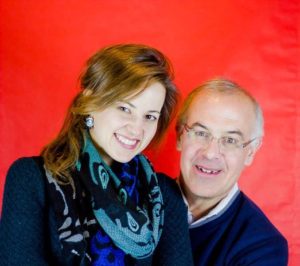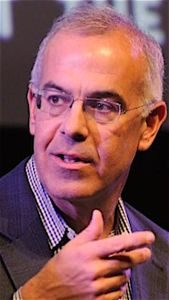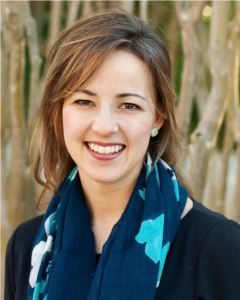This ascription of Armenians is seen in the context of indifference, which was widely criticized by the Israeli historian Ya’ir Oron in his book The Banality of Indifference that dealt with the inaction of overall members of the Ottoman Empire during the Armenian Genocide in the beginning of the 20th century.[19]:124
This indifference was noted inside the Jewish community of the Ottoman Empire, during the 1909 massacre of Armenians in Adana, by Itamar Ben-Avi, the first native speaker of Modern Hebrew in the newspaper HaZvi. In an editorial named “We”, he intervened to speak about the attitude of the Jews during the upheaval and widespread carnage that ensued during the Ottoman countercoup of 1909, while protesting the general indifference to calls to help alleviate the plight of the Armenians. Outlining the attitude and loyalties of the Ottoman Jews at the time, with regards to other subjects, he wrote: “We did nothing, because we were timid, because the matter did not affect us directly, utterly. Unfortunately these Turks were not Jews. Unfortunately we had covert sympathy for the enemy of the Turkish Parliament, Abd-Hamid II. Sympathy because we believe that Abd-al Hamid would always be our friend, our generous and merciful supporter. That is why we stood aside; that is why we chose to be, in the words of the wise commander, the rearguard; that is why we continue today, two weeks after the revolution and a week after the victory of the ‘Young Turks’ to be indifferent. We are watching from the side and waiting. We are a peculiar people. Yes we!”[19]:125 Regarding the attitude of the Jews towards the Armenians, he wrote: “A slight grimace on their lips, a short heartfelt sigh, and nothing more. The Armenians are not Jews, and according to folk tradition the Armenians are nothing more than Amaleks! Amaleks? We would give them help? To whom? To Amaleks? Heaven forbid!”.[19]
Rabbi Joachim Prinz wrote in his book “The secret Jews” that Ataturk was a donmeh crypto-Jew, page 122:
“The revolt of the Young Turks in 1908 against the authoritarian regime of Sultan Abdul Hamid began among the intellectuals of Salonika. It was from there that the demand for a constitutional regime originated. Among the leaders of the revolution which resulted in a more modern government in Turkey were Djavid Bey and Mustafa Kemal. Both were ardent doenmehs. Djavid Bey became minister of finance; Mustafa Kemal became the leader of the new regime and he adopted the name of Atatürk. His opponents tried to use his doenmeh background to unseat him, but without success. Too many of the Young Turks in the newly formed revolutionary Cabinet prayed to Allah, but had as their real prophet Shabtai Zvi, the Messiah of Smyrna.”
From the Spirit of Serbia blog: On 14 October 1922, the Literary Digest published an articled entitled “The Sort of Mustafa Kemal is” which states:
“A SPANISH JEW BY ANCESTRY, an orthodox Moslem by birth and breeding, trained in a German war college, a patriot, a student of the campaigns of the world’s great generals, including Napoleon, Grant and Lee—these are said to be a few outstanding characteristics in the personality of the new ‘Man on Horseback’ who has appeared in the Near East. He is a real dictator, the correspondents testify, a man of the type which is at once the hope and fear of nations torn to pieces by unsuccessful wars. Unity and power have come back to Turkey largely through the will of Mustafa Kemal Pasha. No one has yet, it appears, referred to him as the ‘Napoleon of the Near East,’ but some enterprising journalist will probably do it sooner or later; for Kemal’s way of rising into power, his methods at once autocratic and carefully considered, even his military tactics, are said to resemble those of Napoleon.”
In an article entitled “When Kemal Ataturk Recited Shema Yisrael” by the Jewish author Hillel Halkin, he quoted Mustafa Kemal Ataturk:
“I’m a descendant of Sabbetai Zevi—not indeed a Jew any more, but an ardent admirer of this prophet of yours. My opinion is that every Jew in this country would do well to join his camp.”
Gershom Scholem wrote in his book “Kabbalah”, page 330-331:
“Their liturgies were written in a very small format so that they could easily be hidden. All the sects concealed their internal affairs from Jews and Turks so successfully that for a long time knowledge of them was based only on rumor and upon reports of outsiders. Doenmeh manuscripts revealing details of their Shabbatean ideas were brought to light and examined only after several of the Doenmeh families decided to assimilate completely into Turkish society and transmitted their documents to friends among the Jews of Salonika and Izmir. As long as the Donmeh were concentrated in Salonika, the sect´s institutional framework remained intact, although several Donmeh members were active in the Young Turks` movement which originated in that city. The first administration that came to power after the Young Turk revolution (1909) included three ministers of Doenmeh origin, including the minister of finance, Djavid Bey, who was a descendant of the Baruchiah Russo family and served as one of the leaders of his sect. One assertion that was commonly made by many Jews of Salonika (denied however, by the Turkish government) was that Kemal Atatürk was of Doenmeh origin. This view was eagerly embraced by many of Atatürk´s religious opponents in Anatolia.”
Inspector-General of the Turkish Forces in Armenia and Military Governor of the Egyptian Sinai during WW1, Rafael De Nogales, wrote in his book “Four Years Beneath the Crescent” that the chief architect of the Armenian genocide, Talaat, was a donmeh Jew, page 26-27:
“That was the renegade Hebrew (donme) of Salonika, Talaat, the principal organizer of the massacres and deportations, who, fishing in muddy waters, succeeded in raising himself from the humble rank of postal clerk to that of Grand Vizier of the Empire.”





